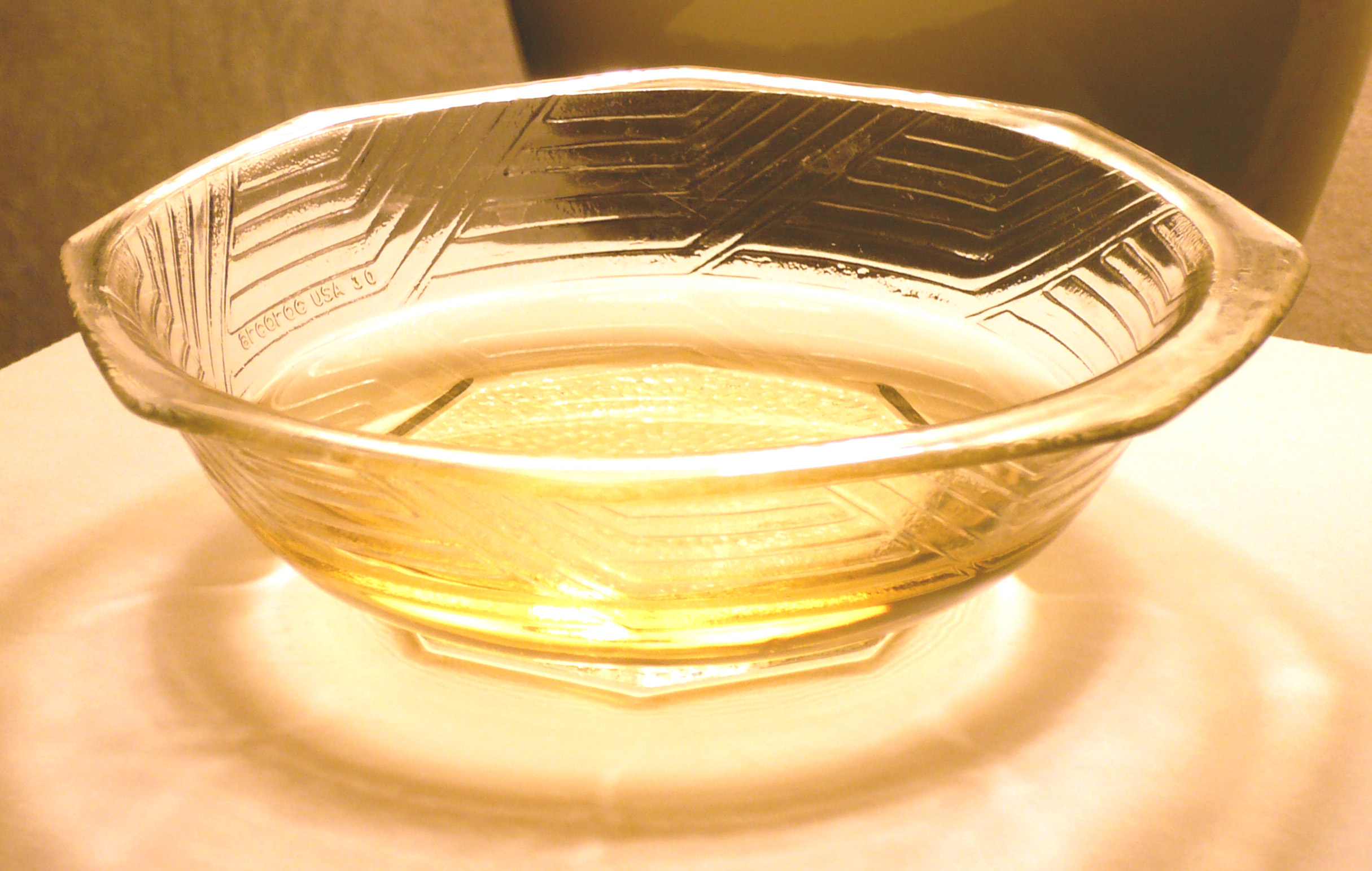|
Toso
, or ''o-toso'', is spiced medicinal sake traditionally drunk during Japanese New Year celebrations. Culture Toso is drunk to flush away the previous year's maladies and to aspire to lead a long life. For generations it has been said that "if one person drinks this his family will not fall ill; if the whole family does no-one in the village will fall ill" and has been a staple part of New Year's osechi cuisine in Japan. Toso is written using two kanji: 蘇 representing evil spirits and 屠 meaning to slaughter. Toso is made by combining several medicinal herbs to form , a spicy mixture, which is then soaked in sake or mirin. If made with mirin, essentially a sweet sake, it is suitable for drinking, but using fermented mirin seasoning would not be appropriate as it is too salty. Three sizes of cup, called (see picture), are used starting with the smallest and passed round with each family member or guest taking a sip. Drinking rituals differ by region, but in formal situat ... [...More Info...] [...Related Items...] OR: [Wikipedia] [Google] [Baidu] |
Sake
Sake, also spelled saké ( ; also referred to as Japanese rice wine), is an alcoholic beverage of Japanese origin made by fermenting rice that has been polished to remove the bran. Despite the name ''Japanese rice wine'', sake, and indeed any East Asian rice wine (such as huangjiu and cheongju), is produced by a brewing process more akin to that of beer, where starch is converted into sugars which ferment into alcohol, whereas in wine, alcohol is produced by fermenting sugar that is naturally present in fruit, typically grapes. The brewing process for sake differs from the process for beer, where the conversion from starch to sugar and then from sugar to alcohol occurs in two distinct steps. Like other rice wines, when sake is brewed, these conversions occur simultaneously. The alcohol content differs between sake, wine, and beer; while most beer contains 3–9% ABV, wine generally contains 9–16% ABV, and undiluted sake contains 18–20% ABV (although this is o ... [...More Info...] [...Related Items...] OR: [Wikipedia] [Google] [Baidu] |
Mirin
is a type of rice wine and a common ingredient in Japanese cooking. It is similar to sake but with a lower alcohol content and higher sugar content. The sugar content is a complex carbohydrate that forms naturally during the fermentation process; no sugars are added. The alcohol content is further lowered when the liquid is heated. Three types of mirin are common. The first is ''hon mirin'' (literally: true mirin), which contains about 14% alcohol and is produced by a 40 to 60 day mashing ( saccharification) process. The second is ''shio mirin'' (literally: salt mirin), which contains a minimum of 1.5% salt to prevent consumption in order to avoid alcohol tax. The third is ''shin mirin'' (literally: new mirin), or ''mirin-fu chomiryo'' (literally: mirin-like seasoning), which contains less than 1% alcohol, yet retains the same flavor. In the Edo period, mirin was consumed as '' amazake''. O-toso, traditionally consumed for the Japanese New Year, can be made by soaking a sp ... [...More Info...] [...Related Items...] OR: [Wikipedia] [Google] [Baidu] |
Osechi
Osechi-ryōri (御節料理, お節料理 or おせち) are traditional Japanese New Year foods. The tradition started in the Heian period (794–1185). ''Osechi'' are easily recognizable by their special boxes called '' jūbako'' (重箱), which resemble '' bentō'' boxes. Like ''bentō'' boxes, ''jūbako'' are often kept stacked before and after use. Examples of osechi dishes The dishes that make up ''osechi'' each have a special meaning celebrating the New Year. Some examples are: *'' Daidai'' (橙, だいだい), Japanese bitter orange. ''Daidai'' means "from generation to generation" when written in different kanji as 代々. Like ''kazunoko'' below, it symbolizes a wish for children in the New Year. *' (伊達巻 or 伊達巻き or だてまき), sweet rolled omelette mixed with fish paste or mashed shrimp. They symbolize a wish for many auspicious days. On auspicious days (晴れの日, ''hare-no-hi''), Japanese people traditionally wear fine clothing as a part of enjoy ... [...More Info...] [...Related Items...] OR: [Wikipedia] [Google] [Baidu] |
Mulled Wine
Mulled wine, also known as spiced wine, is an alcoholic drink usually made with red wine, along with various mulling spices and sometimes raisins, served hot or warm. It is a traditional drink during winter, especially around Christmas. It is usually served at Christmas markets in Europe, primarily in Germany. There are non-alcoholic versions of it. Vodka-spiked mulled wine can be found in Polish Christmas markets, where mulled wine is commonly used as a mixer. Origins The first record of wine being spiced and heated can be found in Plautus's play ''Curculio'', written during the 2nd century BC. The Romans travelled across Europe, conquering much of it and trading with the rest. The legions brought wine and viticulture with them up to the Rhine and Danube rivers and to the Scottish border, along with their recipes. The Forme of Cury, a medieval English cookery book from 1390, which mentioned mulled wine, says: "Pur fait Ypocras ..." grinding together cinnamon, ginger, gala ... [...More Info...] [...Related Items...] OR: [Wikipedia] [Google] [Baidu] |
Japanese New Year
The is an annual festival with its own customs. Since 1873, the official Japanese New Year has been celebrated according to the Gregorian calendar, on January 1 of each year, . However, some traditional events of the Japanese New Year are partially celebrated on the first day of the year on the modern Tenpō calendar, the last official lunisolar calendar which was used until 1872 in Japan. History Prior to the Meiji period, the date of the Japanese New Year had been based on Japanese versions of lunisolar calendar (the last of which was the Tenpō calendar) and, prior to Jōkyō calendar, the Chinese version. However, in 1873, five years after the Meiji Restoration, Japan adopted the Gregorian calendar and the first day of January became the official and cultural New Year's Day in Japan. Traditional food The Japanese eat a selection of dishes during the New Year celebration called , typically shortened to ''osechi.'' Many of these dishes are sweet, sour, or dried, so the ... [...More Info...] [...Related Items...] OR: [Wikipedia] [Google] [Baidu] |
Apiaceae
Apiaceae or Umbelliferae is a family of mostly aromatic flowering plants named after the type genus '' Apium'' and commonly known as the celery, carrot or parsley family, or simply as umbellifers. It is the 16th-largest family of flowering plants, with more than 3,700 species in 434 generaStevens, P.F. (2001 onwards)Angiosperm Phylogeny Website Version 9, June 2008. including such well-known and economically important plants as ajwain, angelica, anise, asafoetida, caraway, carrot, celery, chervil, coriander, cumin, dill, fennel, lovage, cow parsley, parsley, parsnip and sea holly, as well as silphium, a plant whose identity is unclear and which may be extinct. The family Apiaceae includes a significant number of phototoxic species, such as giant hogweed, and a smaller number of highly poisonous species, such as poison hemlock, water hemlock, spotted cowbane, fool's parsley, and various species of water dropwort. Description Most Apiaceae are annual, bi ... [...More Info...] [...Related Items...] OR: [Wikipedia] [Google] [Baidu] |
Japanese Cuisine Terms
Japanese may refer to: * Something from or related to Japan, an island country in East Asia * Japanese language, spoken mainly in Japan * Japanese people, the ethnic group that identifies with Japan through ancestry or culture ** Japanese diaspora, Japanese emigrants and their descendants around the world * Japanese citizens, nationals of Japan under Japanese nationality law ** Foreign-born Japanese, naturalized citizens of Japan * Japanese writing system, consisting of kanji and kana * Japanese cuisine, the food and food culture of Japan See also * List of Japanese people * * Japonica (other) * Japonicum * Japonicus * Japanese studies Japanese studies ( Japanese: ) or Japan studies (sometimes Japanology in Europe), is a sub-field of area studies or East Asian studies involved in social sciences and humanities research on Japan. It incorporates fields such as the study of Japane ... {{disambiguation Language and nationality disambiguation pages ... [...More Info...] [...Related Items...] OR: [Wikipedia] [Google] [Baidu] |
Tamagozake
is a Japanese drink consisting of heated sake, sugar and a raw egg. It translates as "egg sake", being made of the kanji 卵 ''tamago'' (egg) and 酒 ''sake''. Use as a cold remedy Tamagozake is a traditional home remedy for the common cold in Japan, however there is no medical proof of its efficacy. Even though it is an alcoholic drink, it is sometimes given as a cold remedy to children as well as adults, much as hot toddies are used in Western countries. Recipe Like most home remedies, there are several variant recipes for tamagozake, but the basic properties are the same. Ingredients: * 1 egg * 1 tbsp (15 mL) of honey * 200 mL of sake For a non-alcoholic version, milk may be used as a substitute for sake. See also * * * * List of egg drinks This is a list of notable egg dishes and beverages. Egg as food, Eggs are laid by females of many different species, including bird egg, birds, reptiles, amphibians, and fish, and have been eaten by humans for tho ... [...More Info...] [...Related Items...] OR: [Wikipedia] [Google] [Baidu] |
Rhubarb
Rhubarb is the fleshy, edible stalks ( petioles) of species and hybrids (culinary rhubarb) of '' Rheum'' in the family Polygonaceae, which are cooked and used for food. The whole plant – a herbaceous perennial growing from short, thick rhizomes – is also called rhubarb. Historically, different plants have been called "rhubarb" in English. The large, triangular leaves contain high levels of oxalic acid and anthrone glycosides, making them inedible. The small flowers are grouped in large compound leafy greenish-white to rose-red inflorescences. The precise origin of culinary rhubarb is unknown. The species '' Rheum rhabarbarum'' (syn. ''R. undulatum'') and '' R. rhaponticum'' were grown in Europe before the 18th century and used for medicinal purposes. By the early 18th century, these two species and a possible hybrid of unknown origin, ''R.'' × ''hybridum'', were grown as vegetable crops in England and Scandinavia. They readily hybridize, and cul ... [...More Info...] [...Related Items...] OR: [Wikipedia] [Google] [Baidu] |






_Frambozenrood_bloeiwijze.jpg)